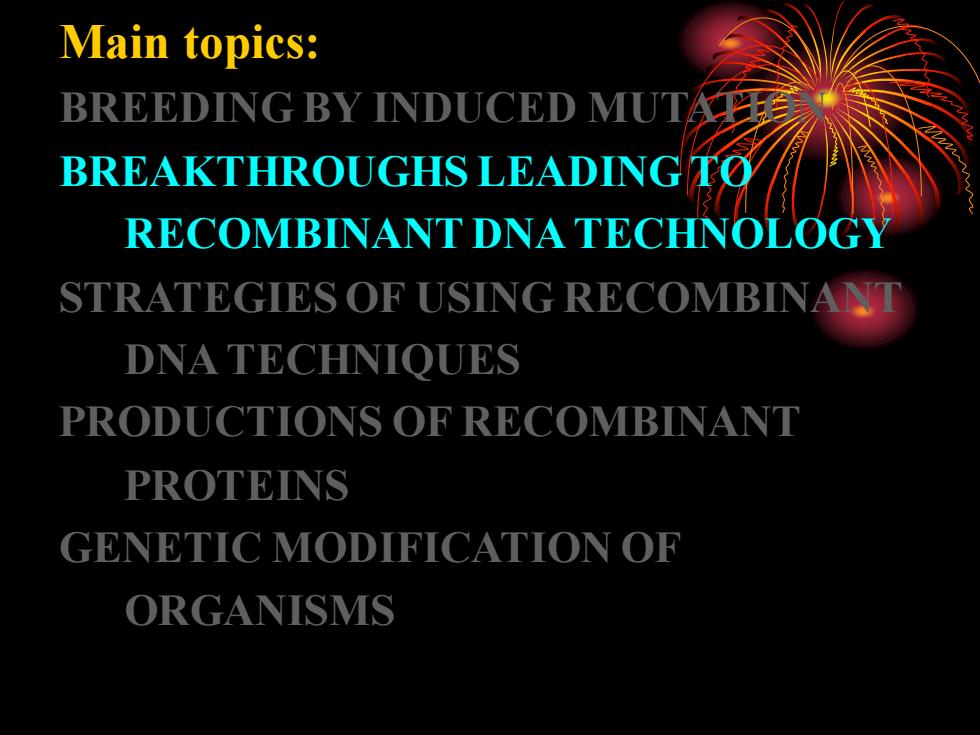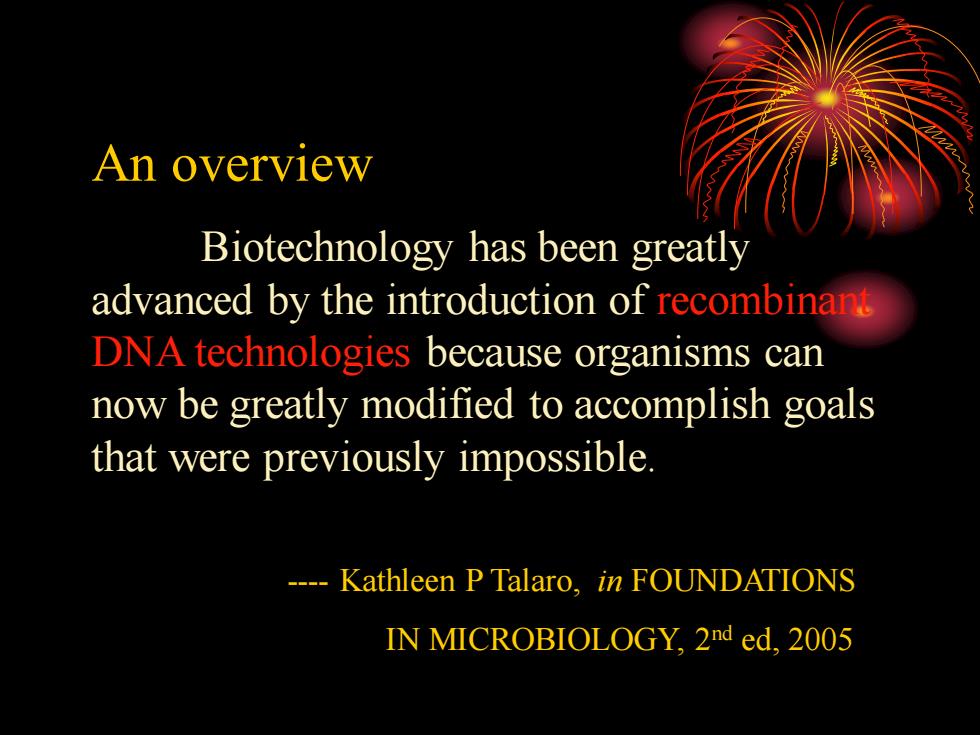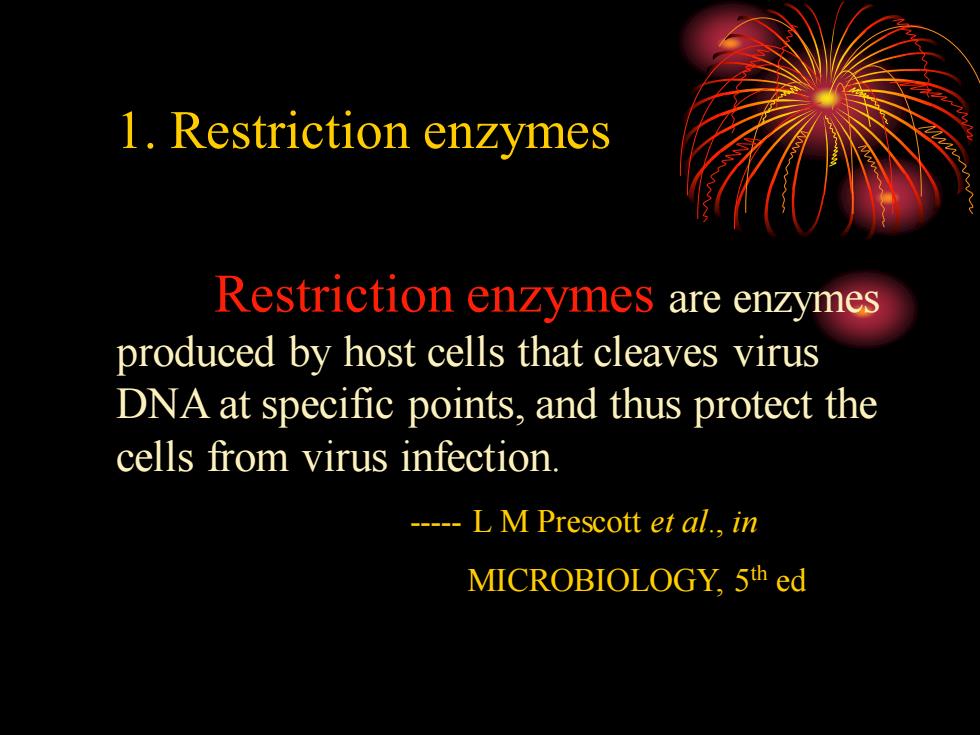
Disadvantages Relatively minor modifications can be obtained. The nature of mutations is not known
Disadvantages Relatively minor modifications can be obtained. The nature of mutations is not known

Main topics: BREEDING BY IN BREAKTHROUGHS LEADING RECOMBINANT DNA TECHNOLOGY STRATEGIES RECOMBINANT PRODUCTIONS RECOMBINANT PROTEINS GENETIC MODIF ON OF ORGANISMS
Main topics: BREEDING BY INDUCED MUTATION BREAKTHROUGHS LEADING TO RECOMBINANT DNA TECHNOLOGY STRATEGIES OF USING RECOMBINANT DNA TECHNIQUES PRODUCTIONS OF RECOMBINANT PROTEINS GENETIC MODIFICATION OF ORGANISMS

An overview Biotechnology has been greatly advanced by the introduction of recombinan DNA technologies because organisms can now be greatly modified to accomplish goals that were previously impossible. Kathleen P Talaro,in FOUNDATIONS IN MICROBIOLOGY,2nd ed,2005
An overview Biotechnology has been greatly advanced by the introduction of recombinant DNA technologies because organisms can now be greatly modified to accomplish goals that were previously impossible. - Kathleen P Talaro, in FOUNDATIONS IN MICROBIOLOGY, 2nd ed, 2005

Breakthroughs in rDNA technology In 1970,Arber,W.H.Smith reported microbial enzymes cut dsDNA at specific site. In 1970,Temin Baltimore found reverse transcriptase from retroviruses In 1972,Jackson et al.successfully generated recombinant DNA molecules. In 1973,plasmid vector was used by Cohen Boyer for gene cloning
Breakthroughs in rDNA technology In 1970, Arber, W. & H. Smith reported microbial enzymes cut dsDNA at specific site. In 1970, Temin & Baltimore found reverse transcriptase from retroviruses. In 1972, Jackson et al. successfully generated recombinant DNA molecules. In 1973, plasmid vector was used by Cohen & Boyer for gene cloning

1.Restriction enzymes Restriction enzymes are enzymes produced by host cells that cleaves virus DNA at specific points,and thus protect the cells from virus infection. -L M Prescott et al.,in MICROBIOLOGY,5th ed
1. Restriction enzymes Restriction enzymes are enzymes produced by host cells that cleaves virus DNA at specific points, and thus protect the cells from virus infection. - L M Prescott et al., in MICROBIOLOGY, 5th ed